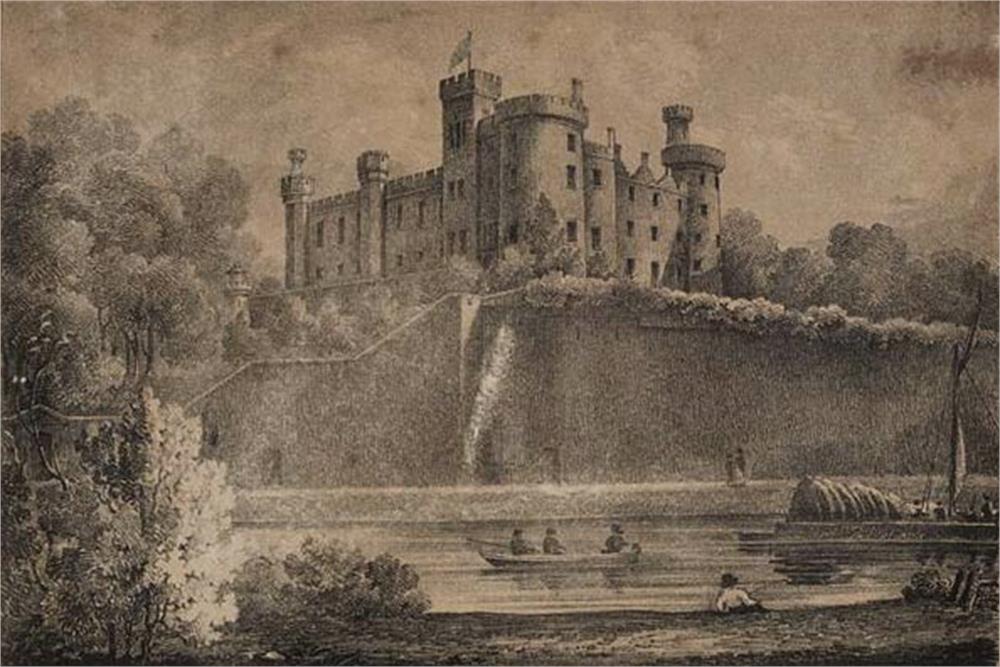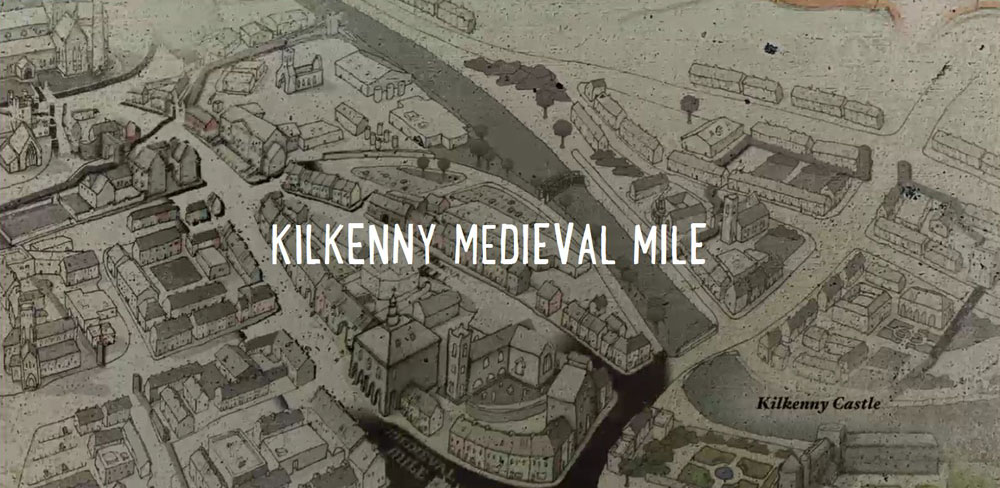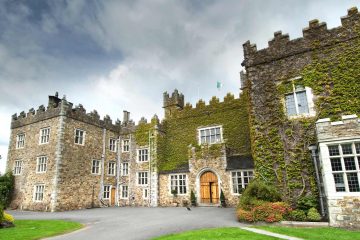JN 8 (N10) TOWARDS KILKENNY
How did Kilkenny get its name? What happened to 14thcentury innkeeper and suspected witch Alice Kyteler? Could Tudor Shee Almshouse be cursed? Which church did Oliver Cromwell sleep in? Walking Kilkenny Medieval Mile with a local guide, this is the flow of conversation, weaving together rich architectural highlights and gossip from throughout the centuries.

On a leisurely curl of the River Nore, Kilkenny is the most atmospheric and compact of medieval cities with all manner of curious, narrow slipways, historic pubs, brightcoloured shops and festivals. The Medieval Mile linking 13th-century St Canice’s Cathedral and the Anglo-Norman castle runs through its heart. And so at one end you discover Kilkenny is named after St Canice (Cill Chainnigh – Canice’s Church) who founded a 6th-century monastic settlement. Then scaling the 100ft, 9th-century Round Tower beside the cathedral, you enjoy the most spectacular views over the city.

In the riverside castle, conversation with another guide switches to the epic invader Strongbow and his son-inlaw William Marshall, builder of this mighty stone edifice when Kilkenny became a major centre of Norman power in Ireland. Outside in the Castle Yard, watching a silversmith crafting a Celtic brooch in Kilkenny Design Centre and exploring The National Craft Gallery, you realise just how much creativity is in the DNA of the city. The waft of hops you encounter signals that another living tradition, the craft of ale-making mastered by 13th-century local monks, is flourishing too – a Smithwick’s Experience brewery tour beckons. Likely, many other secrets of the Medieval Mile will come to light in a chat over a drink in a friendly pub as one of Kilkenny’s famous music sessions springs into life. By the way, innkeeper Alice Kyteler escaped, but her tale doesn’t end there – just ask the locals.




